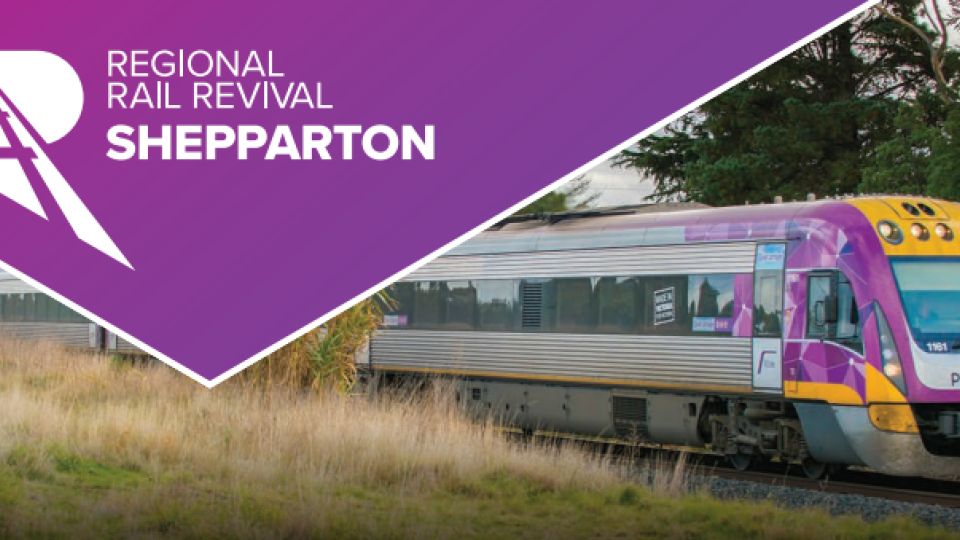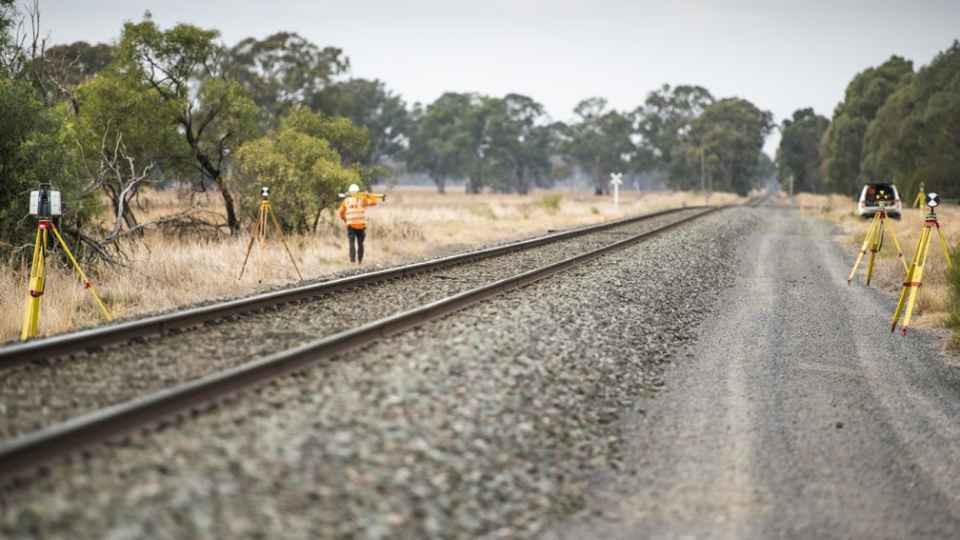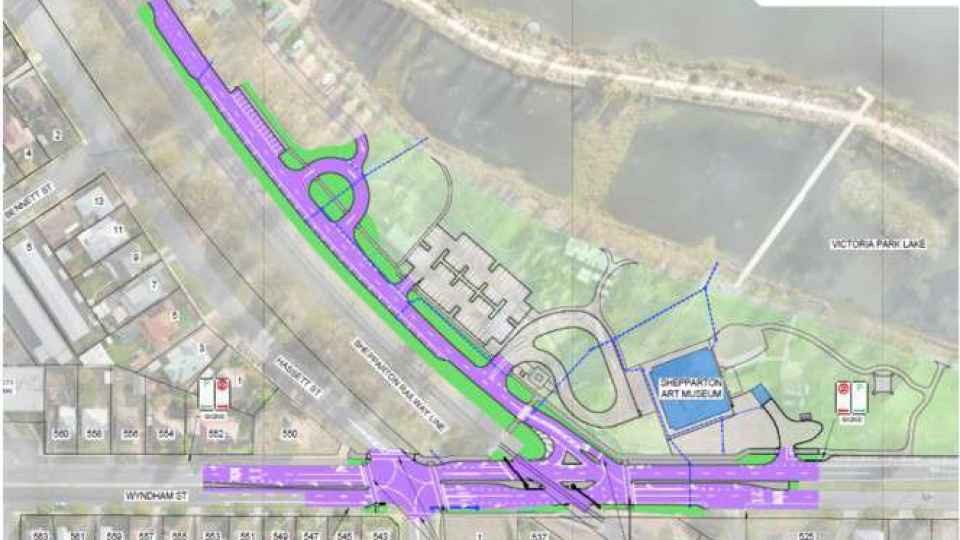Shepparton Passenger Rail Upgrade
An upgrade of the existing passenger rail services between Seymour and Shepparton is the next imperative step towards delivering better rail connectivity to Melbourne for residents of Greater Shepparton.
Rail limitations prevent Greater Shepparton from fully realising its regional growth potential, which is a key policy objective of the State Government’s planning framework.
Overview
To inform this, Council prepared two studies to investigate the costs and possibility of a passenger rail upgrade. The studies were adopted by Council at the Ordinary Council Meeting held on 18 April 2017:
- GHD Pty Ltd and John Hearsch Consulting Pty Ltd were engaged to undertake a review of the constraints and options for achieving a service with eight daily return trains and a travel time of around two hours by 2020, and to provide a robust cost estimate for this service.
The Shepparton Passenger Rail Services Project Shepparton Passenger Improvements Report demonstrates that realistic improvements to an acceptable standard are possible subject to wider regional rail upgrades. The additional rolling stock and infrastructure improvements required to provide this level of service will cost approximately $186 million.
- SGS Economics and Planning Pty Ltd was engaged to identify and quantify the financial and non-financial economic benefits of the passenger rail service plan identified in the Shepparton Passenger Rail Services Project Shepparton Passenger Improvements Report for eight daily return services.
The project case is based on Scenario 2A described in the Shepparton Passenger Rail Services Project Shepparton Passenger Improvements Report. Under this scenario, Shepparton will be served by eight return rail services to Melbourne on weekdays and two of the weekend services will achieve a reduced journey time of around 2:20 hours. The Shepparton Passenger Rail Improvements Economic Impact Study found that an increase in passenger demand of 150% by 2025, which would be a reasonable expectation based on other strategic rail projects, would provide a financial benefit-cost ratio of 0.85. The benefits identified recognise Shepparton’s growing importance as a regional centre, offering improved access to goods, medical and education services and employment.
Next Steps
An upgrade of the Shepparton line from Seymour to Shepparton will allow for better facilities, quicker travel times and more frequent services. The State Government has identified the Shepparton line as a long haul destination but is a comparable distance from Melbourne as other regional Victorian cities. As such, Council believes that it should be identified as an intercity/commuter service to a growth centre like Bendigo, Ballarat, Geelong, etc.
In its report “InterCity: How regional rail can re-balance population growth and create a “state of cities” in Victoria”, July 2016, the Rail Future Institute highlighted Shepparton as having potential to support a population of 150,000 by mid-century. However, this is subject to much improved passenger services, both in terms of frequency and reduced travel times. The report stated that, although currently categorised as a long distance rail service, Shepparton should be seen as a special case because it is only 182 km from Melbourne and the corridor, if upgraded, has the potential to offer a sub two-hour journey time to Melbourne.
Funding
In 2017, the State Government allocated $43.5 million (of which $33 million was for capital works) towards improved passenger rail transport. The works comprise Stage One of three stages required to realise the Shepparton Line Upgrade.
The Federal Government also committed $10 million to develop and improve the Shepparton rail line.
Stage One is now completed, included:
- stabling upgrade at Shepparton Station to give passengers a more frequent and reliable service, and to allow for a fifth daily return service between Shepparton and Melbourne by 2019; and
- 29 extra coach services between Shepparton and Seymour to connect with train services from May 2018 increasing the amount of daily services throughout the day ahead of new train services for the line.
Stages 2 and 3 are currently in progress with the expectation that works will be completed in late 2023. This includes
- a stabling yard for Vlocity trains north of Shepparton which has been completed;
- upgrades to 59 level crossings between Donnybrook and Shepparton has been completed;
- Signalling, track and stabling upgrades to enable trains to travel faster;
- platform extensions at Shepparton, Mooroopna, Murchison East and Nagambie stations to improve amenity and reliability of the Shepparton Rail Line.
Further information can be obtained by visiting the State Government's Victorias Big Build website.
Northern Rail Plan
In view of the rapid growth of Melbourne and resulting infrastructure improvements, additional pressure on Shepparton services will occur on the metropolitan section of the Shepparton line. Council welcomes this commitment from the State and Federal Governments but, given the urgent need to ensure security of service and reduction in travel times there is the need for a long term plan for rail services between Melbourne and Shepparton.
Council will advocate for the development of a Northern Rail Plan to provide more frequent and faster rail services between Shepparton and Melbourne into the future. The plan will aim for an increase in rail services to 20 daily return services between Shepparton and Melbourne with a two hour journey time, and will scope options and infrastructure requirements to achieve this. This may include options to separate regional services from suburban services, and routing Shepparton services through a new rail link via Melbourne Tullamarine Airport to provide new connections from Regional Victoria to the airport and ensure the long term reliability of Shepparton services.
The Federal Government recently allocated $7.5 million to deliver a business case for improved rail services between Northern Victoria and Melbourne. Further work will be required to secure commitment from the State and Federal Governments to ensure that any strategic route developments deliver sustainable regional solutions.
Latest updates
Attachments and links
-
-
-
-
-
July 2017
-




